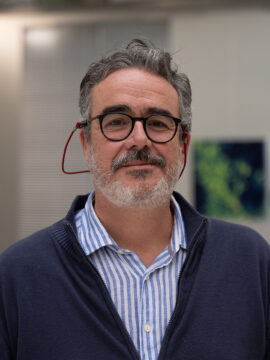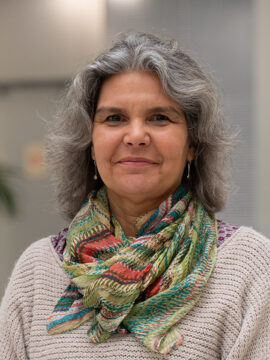SynTeam
The pathological aggregation of neuronal proteins is a key and often causal event in many neurodegenerative diseases. Synucleinopathy, characterized by the accumulation and spread of aggregated amyloid forms of alpha-synuclein in the brain, is observed in Parkinson’s disease (PD), multiple system atrophy (MSA), and dementia with Lewy bodies.
Understanding the molecular mechanisms involved in the amyloid self-assembly of this small synaptic protein, tracking the cellular processes by which neurons handle its pathogenic conformational changes and deciphering the inter-neuronal propagation pathways of these aggregated forms are crucial aspects in neurodegenerative research and hold significant interest for therapeutic development.
It is now well-established that aggregated alpha-synuclein can perpetuate the pathological process by amplifying its own aggregation through a prion-like mechanism based on the self-templating of its amyloid conformation. This prion-like aggregation could explain two key aspects of synucleinopathies: the invasion of different brain regions by the pathological inclusions during disease progression (Braak hypothesis) and the variety of clinical presentations associated with the aggregation of a single protein, a variety that could be linked to the polymorphism of the amyloid forms of alpha-synuclein.
Our team focuses on the structural, molecular, and cellular bases of the replicative and neuro-invasive processes of synucleinopathies, employing multiple approaches:
- Biochemistry: Production and analytical biochemistry are used to produce, isolate, and characterize amyloid complexes, providing structure-function information that can shed light on the molecular mechanisms promoting the progression of pathological amyloid aggregation and identify pharmacologically targetable sites in the assemblies.
- Models based on primary cultures of mouse cortical neurons (high content analysis) and in vivo models (stereotaxic intracerebral injections) with exposure to alpha-synuclein preformed fibrils (PFFs) allow us to explore the propagation phenomenon and analyze the cellular processes involved in the fate of the neo-formed aggregates, the cell types involved, and the pathways activated by neurons or oligodendrocytes in response to the experimental induction of aggregation.
- Methodologies for quantifying histological markers using image analysis allow a quantitative study of pathology progression in vivo and the evaluation of the effects of pharmacological modulations.
With the use of these experimental and analytical methodologies, our team is particularly interested in studying the molecular aspects that differentiate PD and MSA and the downstream cellular mechanisms dealing with the aggregation process. These mechanisms could, on one hand, be involved in the origin of MSA (accumulation of synuclein in oligodendrocytes) and, on the other hand, determine neuronal dysfunction and loss.
Selected publications
-
A model of human neural networks reveals NPTX2 pathology in ALS and FTLD
Marian Hruska-Plochan, Vera I. Wiersma, Katharina M. Betz, Izaskun Mallona, Silvia Ronchi, Zuzanna Maniecka, Eva-Maria Hock, Elena Tantardini, Florent Laferriere, Sonu Sahadevan, Vanessa Hoop, Igor Delvendahl, Manuela Pérez-Berlanga, Beatrice Gatta, Martina Panatta, Alexander van der Bourg, Dasa Bohaciakova, Puneet Sharma, Laura De Vos, Karl Frontzek, Adriano Aguzzi, Tammaryn Lashley, Mark D. Robinson, Theofanis Karayannis, Martin Mueller, Andreas Hierlemann, Magdalini Polymenidou.
Nature. 2024-02-14.
DOI: 10.1038/s41586-024-07042-7 -
Reconsidering α-Synuclein inclusion pathology in neurons, mice, and humans with an antibody sensing NAC engagement during α-Synuclein amyloid conversion
Francesca De Giorgi, Ænora Letourneur, Marianna Kashyrina, Federica Zinghirino, Sandra Dovero, Nathalie Dutheil, Leslie-Ann Largitte, Marie-Laure Arotçarena, Erwan Bezard, Marie-Hélène Canron, Wassilios Meissner, Francesco De Nuccio, Dario Domenico Lofrumento, Florent Laferrière, François Ichas.
Preprint - Research Square. 2024-02-07.
DOI: 10.21203/rs.3.rs-3921168/v1 -
Oligodendrocytes Prune Axons Containing α-Synuclein Aggregates In Vivo: Lewy Neurites as Precursors of Glial Cytoplasmic Inclusions in Multiple System Atrophy?
Francesco De Nuccio, Marianna Kashyrina, Francesca Serinelli, Florent Laferrière, Dario Domenico Lofrumento, Francesca De Giorgi and François Ichas.
biomolecules. 2023-02-01. 13 (2) : 269.
DOI: 10.3390/biom13020269 -
A Novel C-Type Lectin Receptor-Targeted α-Synuclein-Based Parkinson Vaccine Induces Potent Immune Responses and Therapeutic Efficacy in Mice
Sabine Schmidhuber, Sandra Scheiblhofer, Richard Weiss, Mihály Cserepes, József Tóvári, Gabriele Gadermaier, Erwan Bezard, Francesca De Giorgi, Francois Ichas, Dirk Strunk, Markus Mandler.
Vaccines. 2022-08-30. 10 (9) : 1432.
DOI: 10.3390/vaccines10091432 -
α-Synuclein Fibrils as Penrose Machines: A Chameleon in the Gear
Francesca De Giorgi, Vladimir N. Uversky, François Ichas.
Biomolecules. 2022-03-24. 12 (4) : 494.
DOI: 10.3390/biom12040494 -
Neurons with Cat’s Eyes: A Synthetic Strain of α-Synuclein Fibrils Seeding Neuronal Intranuclear Inclusions
Francesca De Giorgi, Muhammed Bilal Abdul-Shukkoor, Marianna Kashyrina, Leslie-Ann Largitte, Francesco De Nuccio, Brice Kauffmann, Alons Lends, Florent Laferrière, Sébastien Bonhommeau, Dario Domenico Lofrumento, Luc Bousset, Erwan Bezard, Thierry Buffeteau, Antoine Loquet, François Ichas.
Biomolecules. 2022-03-11. 12 (3) : 436.
DOI: 10.3390/biom12030436 -
Similar neuronal imprint and no cross-seeded fibrils in α-synuclein aggregates from MSA and Parkinson’s disease
Florent Laferrière, Stéphane Claverol, Erwan Bezard, Francesca De Giorgi, François Ichas.
npj Parkinsons Dis.. 2022-01-13. 8 (1)
DOI: 10.1038/s41531-021-00264-w -
Overexpression of α-Synuclein by Oligodendrocytes in Transgenic Mice Does Not Recapitulate the Fibrillar Aggregation Seen in Multiple System Atrophy
Florent Laferrière, Xin He, Federica Zinghirino, Evelyne Doudnikoff, Emilie Faggiani, Wassilios G. Meissner, Erwan Bezard, Francesca De Giorgi, François Ichas.
Cells. 2020-10-29. 9 (11) : 2371.
DOI: 10.3390/cells9112371 -
Novel self-replicating α-synuclein polymorphs that escape ThT monitoring can spontaneously emerge and acutely spread in neurons
Francesca De Giorgi, Florent Laferrière, Federica Zinghirino, Emilie Faggiani, Alons Lends, Mathilde Bertoni, Xuan Yu, Axelle Grélard, Estelle Morvan, Birgit Habenstein, Nathalie Dutheil, Evelyne Doudnikoff, Jonathan Daniel, Stéphane Claverol, Chuan Qin, Antoine Loquet, Erwan Bezard, François Ichas.
Sci. Adv.. 2020-10-01. 6 (40) : eabc4364.
DOI: 10.1126/sciadv.abc4364 -
Reduced oligodendrocyte exosome secretion in multiple system atrophy involves SNARE dysfunction
Zhenwei Yu, Min Shi, Tessandra Stewart, Pierre-Olivier Fernagut, Yang Huang, Chen Tian, Benjamin Dehay, Anzari Atik, Dishun Yang, Francesca De Giorgi, François Ichas, Marie-Hélène Canron, Roberto Ceravolo, Daniela Frosini, Han-Joon Kim, Tao Feng, Wassilios G Meissner, Jing Zhang.
Brain. 2020-05-18.
DOI: 10.1093/brain/awaa110 -
TDP-43 extracted from frontotemporal lobar degeneration subject brains displays distinct aggregate assemblies and neurotoxic effects reflecting disease progression rates.
Florent Laferrière, Zuzanna Maniecka, Manuela Pérez-Berlanga, Marian Hruska-Plochan, Larissa Gilhespy, Eva-Maria Hock, Ulrich Wagner, Tariq Afroz, Paul J. Boersema, Gery Barmettler, Sandrine C. Foti, Yasmine T. Asi, Adrian M. Isaacs, Ashraf Al-Amoudi, Amanda Lewis, Henning Stahlberg, John Ravits, Francesca De Giorgi, François Ichas, Erwan Bezard, Paola Picotti, Tammaryn Lashley, Magdalini Polymenidou.
Nat Neurosci. 2018-12-17. 22 (1) : 65-77.
DOI: 10.1038/s41593-018-0294-y
Team member(s)
Chercheurs, Praticiens hospitaliers...
François Ichas Ichas (Researcher)
Francesca De Giorgi De Giorgi Ichas (Researcher)
Ingénieur(e)s, technicien(ne)s
Post-doctorant(s)
Doctorant(s)
Ludivine Sabatier Sabatier
Hortense de la Seiglière de la Seiglière
Fabrizio Cavallaro Cavallaro
Neuropsychologist(s) and speech therapist(s)
Ingénieur(s) hospitalier(s) et ARC


